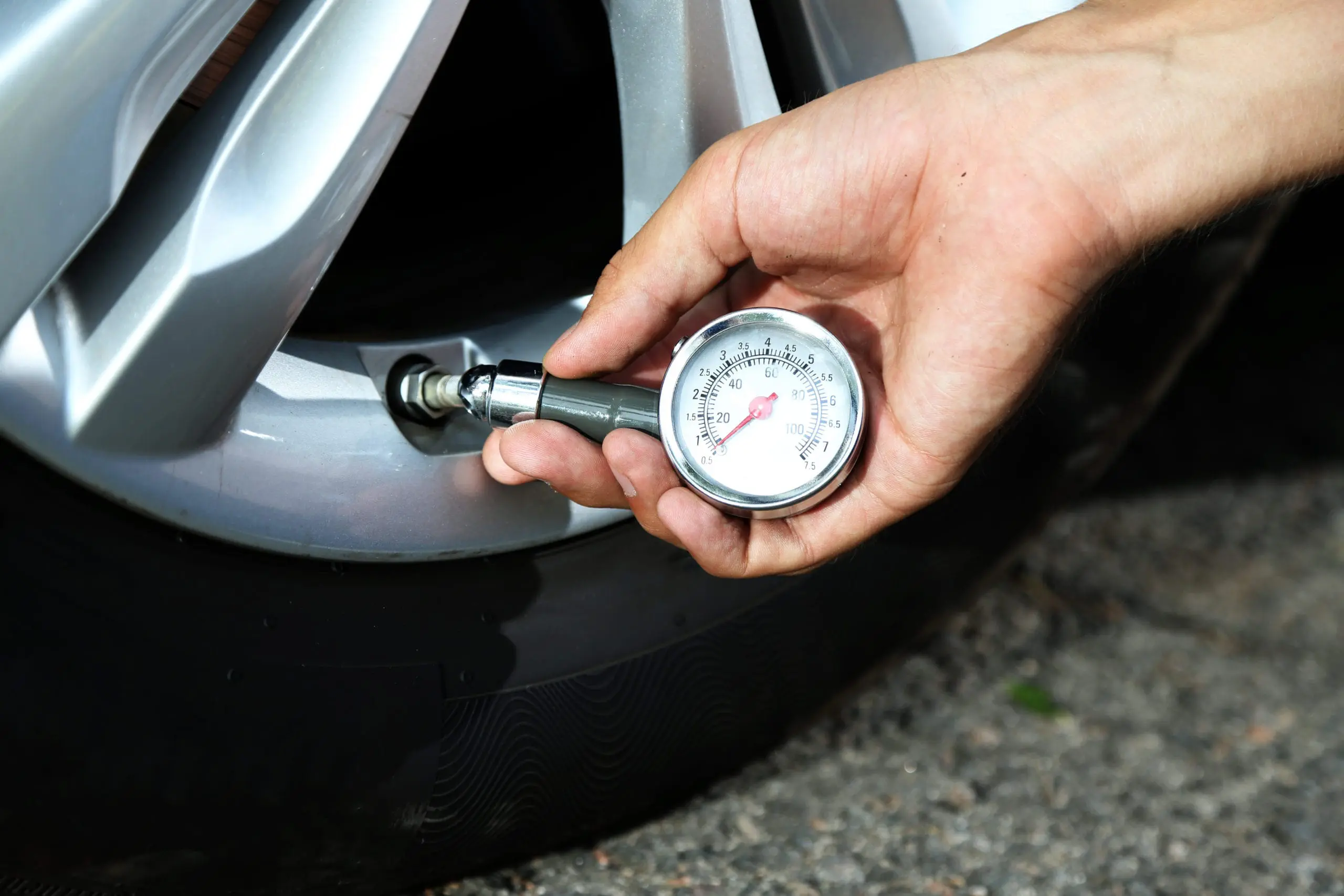HOW TO CHECK TIRE PRESSURE
Knowing how to check tire pressure is one of the most important ways to keep your vehicle safe and ensure you’re getting the most life and the most mileage out of your tires. Any tire, regardless of price, brand, age, or wear, can lose air pressure over time. It is normal. It doesn’t automatically mean your tire is going bad or needs repairing or replacement. It just happens. Fortunately, checking the air pressure in your tires and inflating them when necessary are both very simple.
What You’ll Need to Check Tire Pressure
To check your tire air pressure, all you’ll need is a tire air gauge. You can purchase a basic gauge from your local automotive store or in the automotive section of basically any department store for a few dollars. For a more accurate reading, you’ll want to spend a little more (usually around $10-$15) for one that provides a digital reading. It’s best to always have one of these in your vehicle just in case.
If your tires are low, you’ll need access to an air compressor. Most gas stations will have either coin-operated or free compressors for customer use. Or you can buy a portable unit to keep in your car for emergency usage (however, these usually don’t generate a lot of power and filling a tire up with one may take substantially longer).
Besides a gauge and access to a compressor, you’ll just need a pen and paper to keep track of each tire’s PSI or Pounds (of air) per Square Inch. Memorizing and tracking four different PSI readings in your head can get confusing in a hurry.
Checking Your Tire Pressure
To get the most accurate reading, it’s best to check your tires early in the morning when the temperature is a little colder and your vehicle has been sitting for a while. Rising temperatures and operating your vehicle can both cause the PSI to increase. You can find the optimal PSI level on the tire’s sidewall or on the sticker inside your driver’s side door.
NOTE: On the sidewall, you’ll also find the maximum PSI your tire can handle. DO NOT try to fill your tire to this level. Stick to the recommended level instead.
Next, remove the valve stem cap from the tire and put it somewhere safe so it doesn’t roll away or get lost. Then take your tire gauge and apply it to the valve stem. You’ll hear a loud “hiss” for a second but once you apply enough pressure to create a seal, the hissing should stop. At this point, an analog gauge will push out a stick that will give you a reading and a digital gauge will simply display the level on the screen. Write down that value and repeat these steps for all four tires.
Adding Air to a Tire
If one or more tires are a little low on air, and you don’t have an air compressor of your own, find the nearest gas station air pump and press the button (or insert coins) to activate the unit. Some compressors have fittings that will latch onto your valve stem, but if yours does not, you’ll need to hold it onto the valve stem firmly while your tire inflates.
Have your gauge handy so you can periodically check the PSI level to ensure you’re not overinflating. If you do overinflate, however, most gauges will have a bead you can insert into the valve stem to let some air back out.
Once your tires are inflated and the PSIs are equal (or as close as you can get), you’re all set. Put your valve stem caps back on and you’re good to go!
Conclusion
Even perfectly serviceable tires with no leaks or cracks are prone to losing about one PSI a month under normal conditions and can even trigger the tire pressure light. Keeping your tires properly inflated at all times will keep your tires running longer with less wear and tear, maximize your fuel efficiency, and keep your vehicle safe on the road. If you ever have questions about your tires, or suspect something might be wrong, you can always consult with a professional tire service. But something like inflating your own tires when low is something you can certainly handle on your own and knowing how to check tire pressure is the first step.


